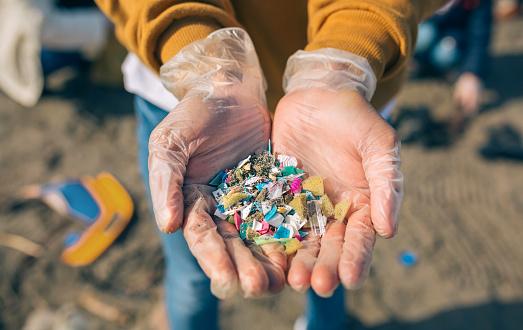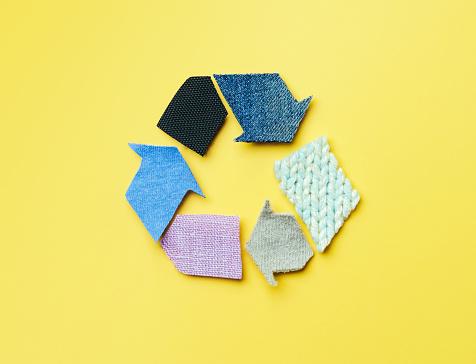The vision for 2030
How can we reduce the waste and pollution linked to the textiles sector – and save energy, water and other natural resources that are used to produce clothes? The answer lies in sustainable fashion that is beneficial for producers, consumers and the planet.
The EU has a Strategy for Sustainable and Circular Textiles to create a greener textiles sector. The aim is a major shift inside the industry and among consumers, creating a whole new sustainable ecosystem for textiles by the end of this decade.
The new approach looks at the entire lifecycle of textiles and proposes actions to change the way we produce and consume textiles. It means that all textile products must be durable, repairable and recyclable. Profitable re-use and repair services will be widely available, and producers will take responsibility for their products along the supply chain.
Making textiles more long-lasting through design requirements
Did you know that 80% of a product’s environment footprint throughout its life cycle is determined when it is designed? This is why the EU will set new design requirements for textiles to make them last longer, easier to repair and recycle. There will also be new requirements on minimum recycled content in textiles.
Europeans will also be better protected through clearer information on textiles and a Digital Product Passport based on key environmental factors.


If there is a potential impact on youth, of a new law or policy, including on sustainable textiles, consultations are to be put in place with young stakeholders, young experts and youth organisations.
Improving the circularity of the sector and reducing waste
These garments are designed to be disposable, so fast fashion encourages unnecessary over-consumption. This leads to excessive waste – much of which cannot be recycled. In factories, worldwide between 25 and 40% of all fabric used is either leftover or becomes waste. Moreover, as reuse and recycling capacities in Europe are limited, a large share of discarded and donated clothing and other textile products are exported to Africa and Asia, where they often end up in landfills and informal waste streams. According to a report from the European Environment Agency, the amount of used textiles exported from the EU has tripled over the past two decades. The EU aims to stop overproduction and overconsumption of clothing. New measures will also discourage the destruction of unsold or returned textiles and restrict the export of textile waste.
The EU already has comprehensive laws on waste – and the main law (the Waste Framework Directive) will be reviewed in 2023. The focus will be on textiles and food waste. The EU is looking carefully at new ways to make producers responsible for textiles they sell after the sale. This is a very effective tool because it encourages them to make items that last longer, and even more importantly, are easier to recycle when they reach the end of their useful life.

Tackling the microplastics challenge
Every time we wash our clothes made from polyester, rayon and nylon, they shed microplastics. Up to 35 % of all microplastics can be traced back to synthetic textiles! These tiny plastic particles eventually end up in the sea where they are consumed by plankton and then the fish we eat, ending up inside our bodies.
It is estimated that about half a million tonnes of microplastics come from our synthetic clothes. That is the equivalent of about 50 billion plastic bottles.
The EU is funding a lot of research on microplastics. The risks they pose need to be explored further. But it’s clear that microplastics released from textiles have a measurable impact of the environment. So the EU is developing concrete ways to address this unintentional release of microplastics.

Protecting people from greenwashing
Today it is difficult for people to make sense of the many labels on the environmental performance of products and companies. In the EU, there are currently more than 200 sustainability labels in use! Some of these are not reliable. They can be misleading as companies can give a false impression of their environmental impacts or benefits - a practice known as ‘greenwashing’. A recent screening of sustainability claims in the textile, garment and shoe sector suggested that 39% of such claims could be false or deceptive.
So it is important that consumers are empowered to make sustainable choices. To do this, in March 2023 the EU proposed common criteria against greenwashing and misleading environmental claims. This initiative will oblige companies to prove their environmental claims, introduce common criteria to check these claims, and encourage the use of reliable ecolabels, such as the EU Ecolabel. It complements a proposal adopted in March 2022 to update EU consumer protection rules.
As a result, Europeans will be better informed about the environmental sustainability of products and better protected against false or misleading green claims. General environmental claims, such as “green”, “eco-friendly”, “good for the environment” will be banned. More specific claims like “this T-shirt is made out of 5 recycled plastic bottles” will only be allowed if there is solid evidence to support the claim. The new measures will increase the competitiveness of businesses making a genuine effort to improve the sustainability of their products, as they will be fairly recognised – and eliminate unfair competition from companies making misleading claims.

All of the policy measures that we take must have the focus of closing inequality gaps and taking into account the needs of us, young people.
Respecting human rights in global textile value chains
The EU recently proposed new rules on Corporate Sustainability Due Diligence. The aim is to shift all major sectors towards greener, fairer, and more responsible corporate behaviour.
It requires all companies within its scope to address negative impacts on human rights and the environment in their own operations and across their value chains. This is in line with internationally recognised human rights and labour standards, and of course international environmental commitments.
The EU will be offering guidance, tools and funding to help companies adjust to the new rules. It will be in their interest to comply. That way they build trust, they avoid damage to the environment and their own reputation, and they’ll find it easier to access funds.

Why is the EU taking action?
Because the textiles sector is one of the least sustainable industries worldwide. It is resource-intensive and wasteful. It is among the top three pressures on water and land use and the top five for raw materials use and greenhouse gas emissions worldwide.
Between 2000 and 2015 textiles production around the world doubled. Now the consumption of clothing and footwear is expected to more than double by 2030. Behind this dramatic rise is fast fashion – a term used to describe the mass production of clothing replicating recent high-fashion trends. It is a highly profitable business model that can quickly turn the latest high-fashion designs into low-cost styles for consumers.
These garments are designed to be disposable, so fast fashion encourages unnecessary over-consumption. This leads to excessive waste – much of which cannot be recycled. The result is a massive impact on our environment. The effects are very real and this excessive use of resources is fuelling climate change, biodiversity loss and pollution.
This is why the EU is taking action to make the textiles sector more sustainable and circular.


